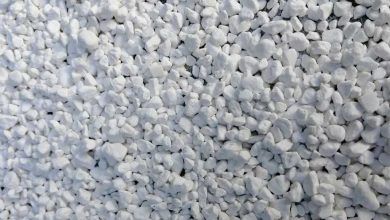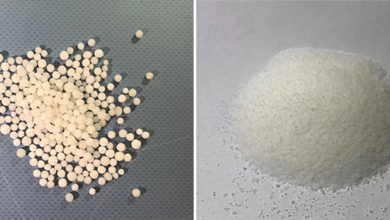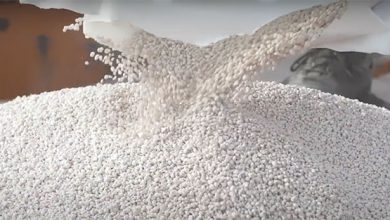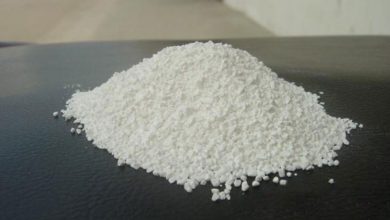How pellet is made from disc pelletizer
Disc pelletizer is a pelletizing equipment widely used in pelletizing plants. Its main component is an inclined steel disc with a periphery. The disc rotates around the central shaft (or center line), meanwhile the raw material rolls down along the bottom of the disc. The fine-grained material is scattered on the surface of the wet cue ball, so that the cue ball continues to grow to a specified size.
The characteristic of the work of the disc pelletizer is, it can make the material form a regular movement, so that the larger pellets and the smaller pellets run along their respective orbits. Therefore, according to the size classification, the discharged pellets are of qualified size. The required amount of raw pellets is equivalent to the amount of discharged green pellets. According to the force condition and movement law of the material in the pelletizing plate, the ball will automatically leave the edge of the plate and slide down when the plate surface reaches a certain height. The premise of automatic classification is that the material balls have different friction coefficients and thus have different breakaway angles.
During the rolling pelletizing process, the balls are segregated according to their particle size, thus a static layer is formed in the disc. The material is classified according to the particle size in the static layer, and then from the static layer downward. The ball with the largest size rolls down first, and then the small balls.
The cue ball growth stage occurs during the time when the cue ball rolls down along the disk surface, so the more times the material rolls down in the disk per unit time, the faster the ball grows, so the working efficiency of the disc pelletizer is proportional to its RPM.
In order to maintain the effective area of the disc surface, the inclination angle must be increased while increasing the rotational speed. However, after the inclination angle increases, the final rolling velocity of the balls also increases correspondingly, and the impact force on the edge of the disc and on other balls also increases with the increase of the inclination angle. Therefore, the speed and inclination should be reasonably configured to achieve the best pelletizing effect.
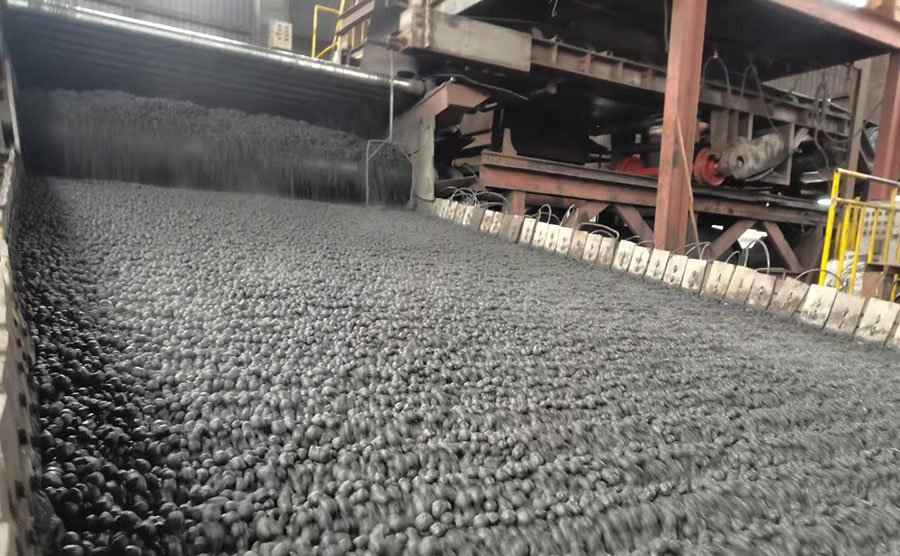
6 factors that will affect the quality of pellet
Let’s take iron ore concentrate and bentonite pelletizing as an example to check various factors that affect disc pelletizing.
1. Raw material
The surface properties of raw materials directly affect the pelletizing properties of materials. Different raw materials have different surface hydrophilicity, which affects the effect of pelletizing.
When the composition and particle size of raw materials are changed, the performance of pelletizing will also be changed. If the operation of other processes in the process remains unchanged, but the raw materials change, the pelletizing effect will appear unstable. Necessary particle size and raw material testing are prerequisites to ensure stable quality of finished pellets.
2. Binder
Bentonite has strong cohesiveness, adsorption, dispersibility and expansibility. Its special molecular structure enables it to absorb a large amount of interlayer water. It is a high-quality additive.
It can not only improve the shattered strength of green pellets, but also regulate the moisture when the moisture of the raw material is too high.
The addition of bentonite material has greater adaptability to water, reduces the chaos of material trajectory in the disc, and the effect of grading the pelletizing disc according to the viscosity disappears, which promotes the stability of the pelletizing disc. Adding an appropriate amount of bentonite is beneficial to the cue ball formation and growth of raw balls.
Increasing the amount of bentonite within a certain range is conducive to the improvement of green ball strength. The compressive strength of finished balls also has a certain relationship with the strength of green balls. The better the strength of green balls, the better the compressive strength of finished balls.
The drying behavior of green balls with bentonite is affected by the properties of bentonite. The drying speed at the initial stage of drying is slower than that of other green balls, and the formation of the dry shell is slower.
A large amount of capillary water diffuses to the surface of the green ball along the capillary, which is not easy to cause excessive internal steam pressure, so the rupture temperature is increased, the amount of powder in the furnace is small, and the gas permeability of the material column is good.
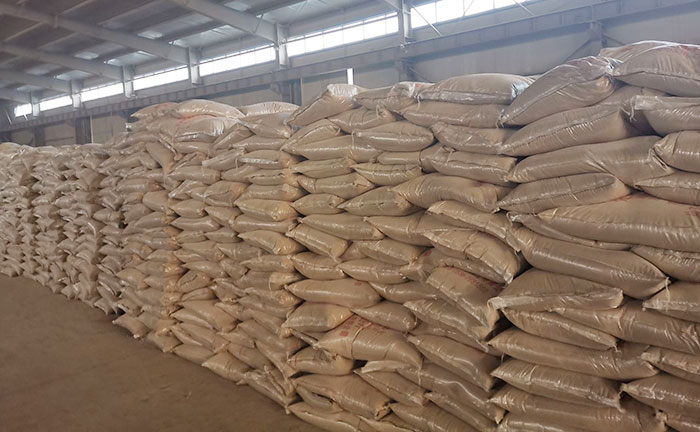
3. Moisture
The impact of material moisture on pelletizing is divided into two aspects: one is the way of adding water, and the other is the amount of water added.
Pelletizing is to add a small amount of water on the basis of the original moisture of the material. Normally, the moisture of iron ore concentrate is 9% to 11%, after drying, the moisture is 6% to 7%, and the moisture of green pellets is normally 7% to 8%.
In the process of pelletizing the concentrate, 1% to 2% of water is added. Adding water in the pelletizing process can accelerate the formation and growth of cue balls, can accurately control the most suitable moisture for ball making, and can adjust the size of raw balls.
Appropriate water supplement can easily form an appropriate number of cue balls. It can also make the cue ball grow up and compact quickly.
During the rotation of the pelletizing disk, some of the bulk material that has not formed the cue ball will be brought to the compact area to absorb the excess water on the surface of the raw ball.
From the comparison of the moisture of green balls and the shattered strength, we can find that the moisture of green balls has a certain relationship with the number of drops. When the moisture is high, the shattered strength of green balls increases, but if the moisture of green balls is too large, although the plasticity is enhanced and the drop strength is improved, it is not conducive to the drying and preheating of the shaft furnace.
Practice has proved that if the moisture of green balls is too high, the drying time will be prolonged, which will affect the air permeability of the shaft furnace and reduces the yield.
4. RPM and angle of the disc
The inclination angle of the disc pelletizer is generally 45-50°.
When the inclination angle of the disc pelletizer is constant, the peripheral speed can only fluctuate within a certain range. If the peripheral speed is too low, the material will not rise to the apex of the vertical diameter of the disc, resulting in empty material in the pelletizing area, and the ball will slide in the lower area of the disc. On one hand, the utilization rate of the disk is low, which affects the output. On the other hand, because the cue ball does not rise enough, its kinetic energy is insufficient, and the necessary compactness cannot be obtained when the cue ball rolls down. It will be thrown to the edge of the disk, resulting in “empty material” in the center of the disk, which cannot be separated according to the particle size, and even stops the rolling forming process of the cue ball.
Similarly, when the speed is constant, the inclination angle must be consistent with the optimum value. When the angle is less than the optimum value, the rolling performance of the cue ball will deteriorate, and almost all the materials in the disk will move along the edge of the disk, resulting in “empty material” in the center of the disk, thus rolling forming conditions deteriorate. When the angle is greater than the optimum value, the material in the disk cannot be brought to the cue ball forming area, resulting in a reduction in the working area of the disk.
5. Time on pelletizing
The time required to roll the material into a ball depends on the size of the finished ball, the difficulty of forming the ball and the thickness of the raw material particles.
If the size of the finished ball is large, the pelletizing time will be long. If the raw material has poor pelletizing property, the pelletizing time will be long as well. The quality and strength of the green ball will increase with the prolongation of the ball making time. Prolonging the ball making time is beneficial to improve the quality of the green ball. But it will reduce the utilization factor of the equipment.
With the increase of the utilization coefficient, the rolling time of a single green ball in the disk is shortened, and the shattered strength of the green ball shows a downward trend. According to the accumulation of experience and data, it is very important to have a reasonable grasp of the ball pelletizing time.
6. Operating habit
During the operation, if the feeding amount and water feeding amount are not adjusted in time or the adjustment degree is not in place, it is easy to cause confusion in the trajectory of the material in the pelletizing disc, and the disc’s function of grading according to the viscosity will disappear. Especially when the moisture of the incoming material fluctuates, it affects the formation speed of the cue ball in the plate and the growth rate of the raw ball, causing the trajectory of the material in the plate to be chaotic.
Therefore, when workers operate the equipment, they should adopt the operation method of diligent observation and diligent adjustment. According to the actual working conditions, timely adjust the feed rate and water supply rate, and strengthen the management and inspection of pelletizing related processes to ensure uniform feeding and stable drying conditions. Only in this way can the stability of pellet quality be guaranteed.
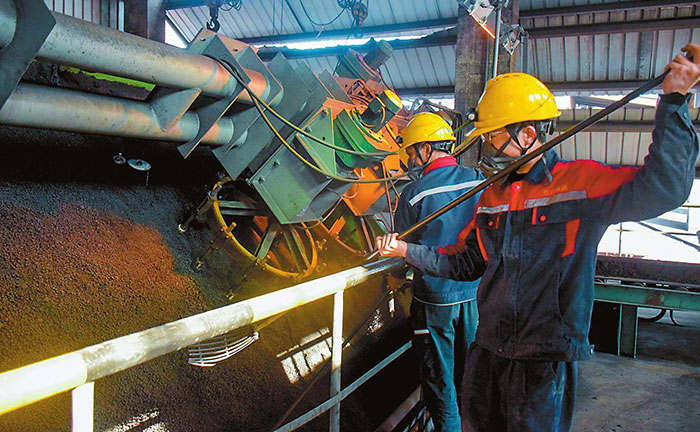
End
There are many factors that affect pelletizing, such as equipment factors, disc diameter, liner, rotating speed, angle, etc., and material factors, such as the nature of raw material, particle size, quality and quantity of the binder (bentonite), etc.
Also subjective factors, such as the way of operation, sense of responsibility, etc. In addition, there are factors such as where and how adding water and materials. Various factors are interrelated and restricted. For example, the diameter of the disc determines the speed and angle. A certain speed must match a certain angle. At the same time, the speed and angle are affected by the friction force on the surface of the liner. The greater the friction force, the required speed is relatively slow, the inclination angle is relatively large, different materials have different pelletizing performances on the same pelletizing disk, the same pelletizing disk, the same material is operated in different ways, and the residence time of green pellets in the disk is different.
In production, it should be analyzed comprehensively, and it is not possible to judge whether it is a material factor or an equipment factor. Only by continuously accumulating experience can the disc granulator be used more efficiently.


